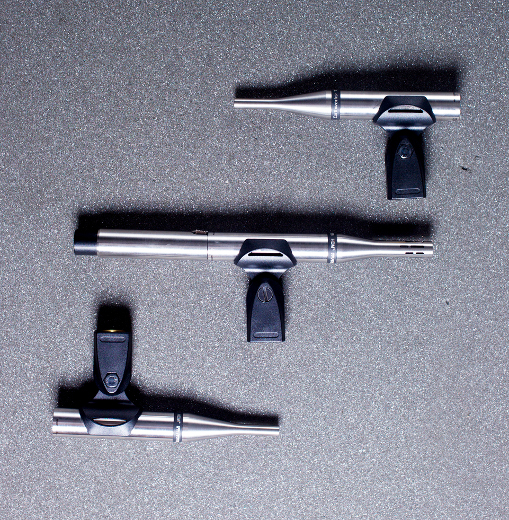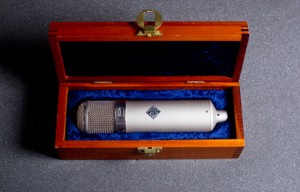Studio Treasure: Top 10 Tools of Composer Silas Hite
Don’t talk to Silas Hite about a trademark sound – he’s got several of them.
Once you get inside of the studio of this prolific LA-based composer, however, it’s easy to see how he manages these alter egos. Armed with an open mind, Hite has accrued a colorful collection of instruments and recording gear, all of which gets tapped on a regular basis to make music that ranges from mutated mosaics to raw rock and hip hop.
Word about his diverse, Emmy-nominated capabilities are getting around. His commercial scores are plentiful (Apple, DirecTV, Dodge, Kraft, Sony), have captured a Cannes Gold Lion Award, a Grand Effie Award and Adweek’s Spot of the Year. Meanwhile, video games (Skate 3, The Simpsons, Sims 2), Hollywood films (Cloudy with a Chance of Meatballs, Circle of 8) and indie flicks (The Record Breaker, The Invention of Dr. Nakamats) are all on le menu as well.
On the artsy side, his latest collaboration is with director Jonn Herschend, Discussion Question, which can be experienced live and in person May 14-25 at NYC’s Whitney Museum of American Art.
Hite’s starting point didn’t hurt, cutting his teeth at the trend-setting music studio Mutato Muzika, which was founded by Mark Mothersbaugh (the famed Devo dude doubles as Hite’s uncle). Combine those eccentric influences with a lifelong study of music, plus a parallel career as a visual artist, and it’s no wonder Silas’ studio is spilling over with candy for the eyes and ears.
But as versatile as Hite is, some of his toys and tools have to rise to the top. What are his current go-to choices in the studio? Read on to see what he’s using, how and why – you’re sure to get some ideas of your own.
THE SH TOP TEN
1. Earthworks Mics
I started my musical life studying drumset with a great jazz drummer named Mel Zelnick at age 11. In college, I studied drum set and percussion at The U of A in Tucson, AZ.
Suffice to say, I know what good drums and good drummers sound like. I am a fan of very natural-sounding drum recordings. If you have a good room, a well-tuned kit and a good player, you can put almost any mic in front of it! But when I have that much quality in the room, I want to capture it clearly.
So my go-to drum mics are Earthworks. I purchased them as a kit. There is a kick drum mic (SR-25) with a detachable pad, and a matched pair of TC-25s for overheads. I augment that with standard close mics, but the majority of my drum sounds are courtesy of the Earthworks.
I put the overheads about ten feet in the air about 15 feet apart and sit behind the kit to visually make adjustments. I like them basically pointing at the drummers chest. The kick mic basically points at a 45 degree angle, 3-4 inches away from the outer kick head. These mics are so good, I feel like you could point all three at the moon and it would still sound great.
You can hear them clearly at work on this recording I made with my old friend Jeff Freidl (A Perfect Circle, Puscifer, Filter, CSS, Devo) behind the kit. Talk about a great pairing of talent and gear. You can feel the wind coming off the kick drum!
2. Pelonis 4288 Active Monitors
They are a bi-amped system powered externally by four 100-watt amplifiers with 96K DSP housed in a single rackmount unit.
Jason Tarulli, a friend of mine who also happens to be a studio engineer and a live sound engineer
(The Black Keys, Cage The Elephant) suggested these boutique monitors to me. He has a pair in his control room at Studio Time Recording in Akron, Ohio. He dropped by my place one day and we went to Vintage King here in LA to compare them to other options. I thought the Pelonis’ sounded amazing and bought a pair.
I use them on everything I mix. Albums, film/tv/commercial/game scores, everything. They have great bass response, they don’t seem to “hype” any frequencies, and they sound “even” at high or low volume. I switch between the Pelonis, my Dynaudio BM6A’s and a pair of AKG K240 studio headphones when I’m mixing.
You can hear my mixes on this soundtrack I did for Stories from the Evacuation, a film with director Jonn Herschend and The San Francisco Museum of Modern Art.
3. Neumann U 47
A vintage classic microphone used by everyone from Dylan, Sinatra, Bono to Beck. etc… This is the real deal. Original serial number 299. I purchased it through a dealer on eBay and it had just been reconditioned by the fantastic techs at BLUE mics. Supposedly it belonged to Moby before me.
I fell in love with the U 47 sound when I was working at my uncle Mark Mothersbaugh’s studio. Mark had purchased a large cross-section of vintage mics from Daniel Lanois’ personal collection. I made sure to try them all out one by one, and my favorite was the U 47.
I use this mic on almost everything I record. It’s great for percussion, acoustic guitars, upright bass, strings and of course vocals. I get a lot of repeat business from singers who have never heard themselves through one before! It just has a beautiful, natural, and complimentary sound. You do have to be confident about what you put in front of it however, because it catches everything!
I believe in a very simple, yet high quality recording chain. I run the Neumann into a Neve 1073 DPA mic pre, into my Apogee Ensemble and then into Logic. Sometimes I will chain in my ADL 1000 tube compressor, depending on the singer.
You can hear the U 47 on this track from my solo album, The Great Giddyup, under the name The Satin Cowboy & The Seven Deadly Sins. I used it for my vocals and the background vocals. Fun fact about this track, one of the guitars I played on this track belonged to Gram Parsons and one of the backup singers is my pal Sam Nelson, Ricky Nelson’s son.
4. BreakTweaker
This is one of the latest plugins I’ve downloaded from iZotope. It’s inexpensive and a lot of fun. Very modern sounding and excellent for dubstep, hip-hop, pop, and EDM (see the SonicScoop review of BreakTweaker here).
I’ve been writing a lot of tracks for television in those genres lately and BreakTweaker works perfectly. I keep up with modern sounds and tools as much as possible and when I happened to watch a video of it online. I was intrigued by the sounds and the unique interface.
The way you can stretch and manipulate the audio is very intuitive and the sequencer makes a lot of sense. I find myself going back to it more and more to build drum tracks. It’s easy to get sucked in and create sounds that are too weird for TV, so I have to try not to go down the rabbit hole once I get into it. Spastic, convulsing, robot music is fun to make but usually doesn’t work well under dialogue!
Recently I used BreakTweaker for the 2014 Whitney Biennial in a collaboration with director Jonn Herschend. You can see and hear our collaboration, Discussion Questions, May 14-25 at the Whitney Museum of American Art in NYC in their theater.
5. Kore Player
This is another good plugin for hip-hop, EDM or pop drum sounds and patterns. I came across it when I purchased Komplete from Native Instruments, but unfortunately I believe it’s been discontinued.
I like that you can add more soundpacks and easily tweak the sounds. I return to it time and time again because it’s a straightforward and easy to use plugin.
I used Kore 2 to create some hip-hop tracks for Davy Franco and LA Clipper DeAndre Jordan in this comedy short for funnyordie.com, directed by Brian McGinn.
6. Pump Organ
This is a Cornish pump organ from the 1880’s. No electricity is used in this instrument. Instead, you have to keep pumping with your feet to make the sound. Hence the name.
I bought this for $100 on Craigslist, quite randomly. I went to pick it up from the seller and found myself in an empty house (except for the organ) the night before the keys had to be turned over for to the new owners of the house. I asked the man selling the organ the story behind the organ, and he told me the house used to belong to his relative, a man with autism, whose sole fixation was organs. He told me that in addition to the pump organ, there had also been a Hammond B-3 with Leslie speakers, and a cathedral pipe organ that had somehow been assembled and then reassembled inside the small one-story home.
You can change the tone by using the stops and control the volume by pumping your feat faster or slower. The instrument itself creaks and groans quite a bit and the pumping sound is very audible. But that is precisely the charm.
I love this instrument because there are a lot of sounds waiting to be released, but you really have to put your own physical energy into it to bring it to life. I typically use the pump organ for a pad-like effect, but you can hear it most clearly creaking and groaning in this film cue.
7. Petosa Accordion
I was drawn to the accordion because I had a conversation with a musical partner about trying to make an album of “sexy” music. We asked ourselves what styles of music we considered sexy. Tango music was at the top of the list. So naturally I started taking accordion lessons.
My accordion is a very nice model I bought from my teacher Dave Caballero who runs an accordion shop in Atwater Village, CA. I took lessons from him for a few years and I must say, the accordion is the most difficult instrument I have ever studied! Besides playing a melody with your right hand, you are changing chords and playing rhythm using 120 different tiny buttons – that you can’t see – with your left hand at the same time.
You also have to squeeze and pull this heavy beast to keep sound coming out. There are also buttons in three different spots to change the tone of the keyboard and also of the bass/chord buttons, independent from each other. It is really an amazing invention and the musical possibilities are endless.
I come back to the accordion again and again because of its beautiful tone and versatility. You can create haunting, beautiful, even sexy music with an instrument that is often relegated to the realm of Polka in the minds of most people.
8. 1960’s Slingerland Drum Kit
One day on my lunch break from Mutato Muzika, the music house I used to work for, I wandered into a Sam Ash. I saw a used 1960’s Slingerland kit set-up and was drawn to it. I sat down and from the first pump of that kick pedal I was in love. It was one of the best kick sounds I had ever heard. It was only $300 bucks too, which I felt was a steal.
I’ve used this kit on many recordings. It is great for pop, jazz, country, and many other styles except for perhaps heavy rock. Some kits sound better when you hit them really hard. This is not one of those kits. It is meant to be played, not beaten. I’ve got an 80’s Pearl Export kit that takes the beatings when I need to deliver them!
I paired the kit with vintage Zildjian cymbals and hi-hats for a cover of the Tom Waits song, “Bad As Me” performed by my wife and I as our band, Hellbeast of The Night. We are both singing and she is on bass. I am playing the other instruments except for the horns, which were covered by friends and recorded at Studio Time Recording in Akron.
9. Percussion Collection
I collect percussion instruments from all over the world. I have a huge collection and whenever I travel I am always on the lookout for more unique additions. I search thrift stores, flea markets, bazaars and pawn shops. Art museum gift shops tend to be a good source.
I’ve got a wide selection of seed pod shakers, guiros, hand drums, rachets, finger cymbals, woodblocks, cowbells, shakers, bamboo sticks, tambourines, etc… I even have a selection of triangles I made myself by pulling rebar (used for construction) out of the mud, grinding and cutting it and bending it into a triangle shape. They sound great because they have ridges and you can play them like a triangle and a guiro at the same time.
I studied percussion in college and it has become a cornerstone for a lot of my scores. Back then my backup plan (if you can call it that) if I didn’t succeed as a composer was to audition for Stomp (a touring percussion ensemble). I’ve got particular fondness for Afro-Cuban and Brazilian rhythms. Percussion is a big part of my musical foundation and something I go back to time and time again. Sometimes the score will be nothing but percussion.
Here’s an example of an all-percussion (and slide whistle) piece of score. This was the end credits for The Record Breaker, a great film with a wildly energetic and wacky main character. I felt the music should reflect his personality.
10. My whistle
I received this instrument as a hereditary gift from my grandfather, Russell G. Hite.
My genes have been particularly kind to me in terms of musical gifts, but this particular talent has found its way into many, many recordings. It is a dexterous gift with a wild vibrato. I can add in a hum at the same time for a nice effect as well.
A whistle can be a tough thing to record well though and I have recorded others and myself doing it many times. The wrong mic can make a whistler sound thin. Improper mic position can lead to too much wind sound. The wrong headphones can give the whistler a headache, as the piercing tone can quickly fatigue your ears after a few takes. Then getting it to sit in the mix is another challenge!
I record a whistle by turning sideways in front of the mic. There is less wind and more tone in the recording that way. I find that my U-47 delivers a very pleasing whistle recording. As far as mixing a whistle, I find that some reverb and a short delay help quite a bit. Then I bring the fader all the way down and slowly bring it up. It is such a piercing and narrow frequency range, it really has no problem cutting right through a mix, even at low volume.
You can hear my whistle in this Martini & Rossi commercial that aired in Europe, starring George Clooney and directed by Robert Rodriguez. I also scored the spot and played the other instruments.
And five more from Silas Hite’s collection to contemplate:
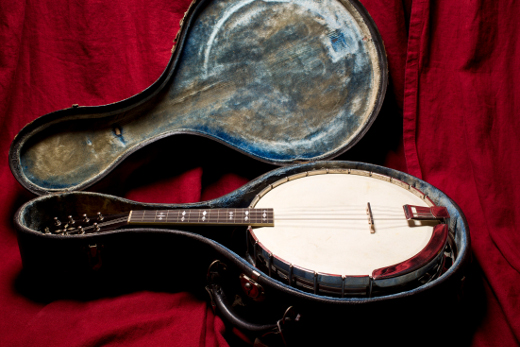
Banjolin — This instrument is from about 1915. It is a banjo body with a mandolin neck. My father (also a musician) traded a Bassman Amp for it in the seventies. Eventually he let me take it and put it to use in my studio.
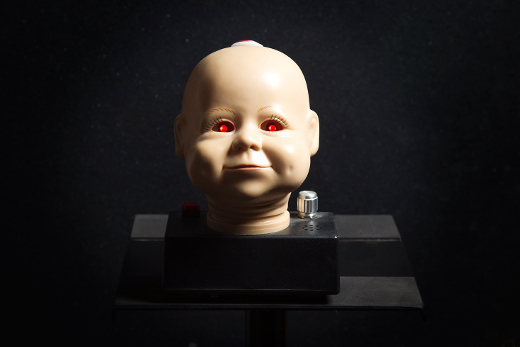
Baby Head Theremin — This light controller theremin was given to me by Mark Mothersbaugh. It is meant to be plugged into an amp and the tone can be aggressively piercing…much like a real baby.
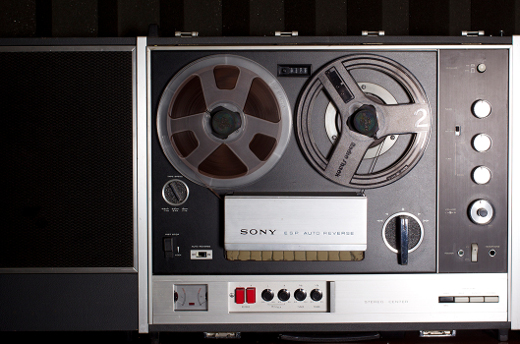
Sony 1/4 reel-to-reel — This is a consumer level 1/4 reel-to-reel given to me by a family friend. It’s fun to track with and get a definite lo-fi tape sound.

Ukelin — This instrument is from the 1930’s and was sold door to door. You place it on your lap, pluck a rhythm part with your left hand, and bow a melody with your right.
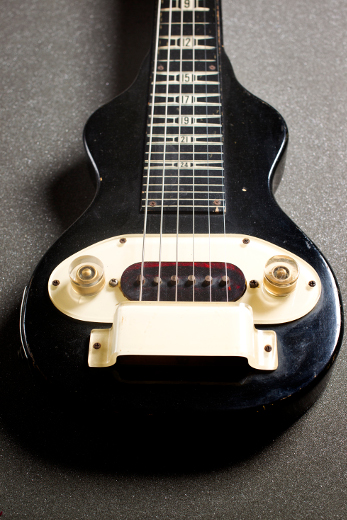
Gibson Lap Steel Guitar — This is from the early 1940’s and is the newest instrument my collection. It sounds beautiful and is a work of art unto itself. I intend to learn how to play it this year.
Please note: When you buy products through links on this page, we may earn an affiliate commission.








